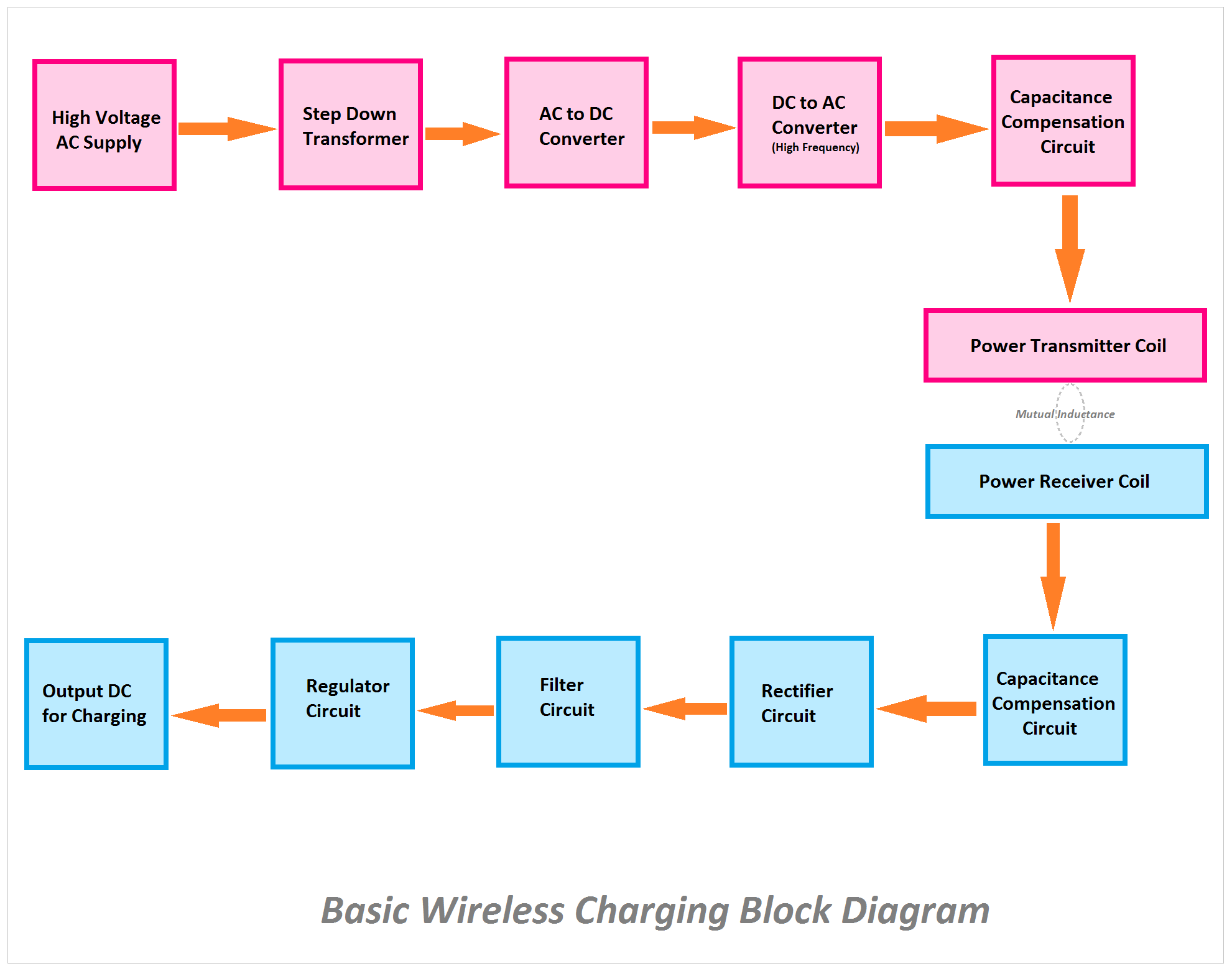Wireless Charging Block Diagram and Working Principle
Hey, in this article we are going to see the block diagram of wireless charging and its working principle. We know that in modern days wireless charging is very popular and is used in so many application areas such as mobile charging, electric vehicle charging, etc. Wireless charging mainly provides the function where no electrical connection between the power supply or power source and load. So it eliminates the hesitation of plug-in and plug-out. Wireless Charging system provides more flexibility, portability, and Reliability.
Basic Block Diagram of Wireless Charging System
The above block diagram helps us understand the working principle of a wireless charging system by presenting the system's components and their connections in a visual and simplified way. It breaks down the system into blocks or functional units, showing how they interact with each other.
According to the above block diagram the wireless charging system consists of so many important parts or blocks, such as
- Step Down Transformer
- AC to DC converter or Rectifier Circuit
- DC to High-Frequency AC converter or Inverter Circuit
- Capacitance Compensation Circuit(Primary)
- Power Transmitter Coil or Primary Coil
- Power Receiver Coil or Secondary Coil
- Capacitance Compensation Circuit(Secondary)
- Rectifier Circuit
- Filter Circuit
- Regulator Circuit
Basic Working Principle of Wireless Charging System
There are various types of wireless charging systems available in the market but the main working concept is almost the same for all. We have our utility power supply as AC or alternating current but we require Direct Current or DC power supply for charging. So let's know how the system works.
First of all the high-voltage AC Supply(230V) is applied to a step-down transformer. The step-down transformer steps down the high-voltage AC to low-voltage AC(24V or 12V or 6V). After the low voltage AC supply is applied to the rectifier circuit that converts the AC into DC. Again the low-voltage DC supply is converted into a very high-frequency AC supply using a DC-to-AC converter. This high-frequency AC power supply is fed to the power transmitter coil. The power receiver coil receives the power in the form of an AC supply.
Basically, the power is transmitted from the transmitter coil to the receiver coil in the principle of mutual inductance in which the electrical transformer also works. You can assume the transmitter coil as the primary coil of a transformer and the receiver coil as the secondary coil of a transformer. So there is no electrical connection between them but power can be transmitted easily. So you can see the receiver circuit is totally isolated from the transmitter circuit.
Now the output of the receiver coil is fed to the rectifier circuit so the AC power supply will be converted to the DC power supply. After the output DC supply from the rectifier circuit is provided to the filter circuit to remove the ripples from the DC. The filtered DC supply is fed to the regulator circuit. The regulator circuit always provides a constant voltage across the load even when the input voltage changes or the load current varies.
Also, you can see in both primary and secondary coils the capacitance compensation circuit is connected. The function of those capacitance compensation circuits is to maintain the capacitance and eliminate the noises.
So, it is important to note that wireless charging is based on close-range magnetic induction, which means the device needs to be placed in close proximity to the charger for the charging process to occur efficiently. The range at which wireless charging works can vary depending on the charger and device being used. Generally, there should be a very small distance between the charger and the device. Like a wireless communication system, you cannot keep your device at a very large distance from the source. Wireless chargers typically adhere to industry-standard specifications, such as the Qi wireless charging standard. This ensures compatibility between different chargers and devices that support the same standard.
Read Also:

